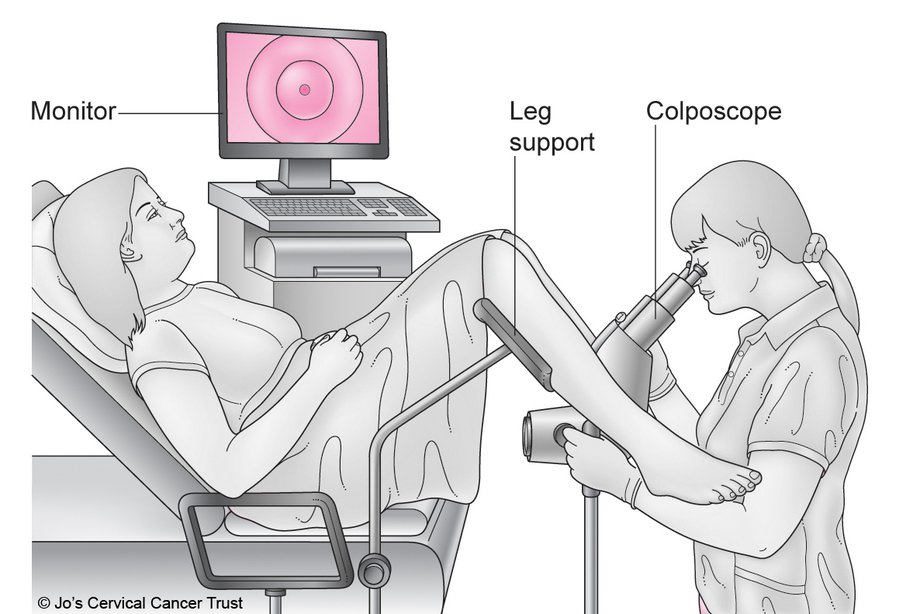What happensColposcopy
A colposcopy is usually carried out in a hospital clinic. It takes around 15-20 minutes and you can go home soon afterwards.
Preparing for a colposcopy
- for at least 24 hours before your appointment avoid having sex or using vaginal medications, lubricants, creams or tampons
- bring a panty liner, as you may have some light bleeding or discharge afterwards
- you can eat and drink as normal
Contact the clinic before your appointment if:
- you think your period might arrive around the time of your appointment – you'll usually still be able to have the procedure, but in some cases you may be advised to postpone it
- you're pregnant – a colposcopy is safe during pregnancy, but a biopsy (removing a tissue sample) and any treatment will usually be delayed until a few months after giving birth
- you want the procedure to be done by a female doctor or nurse
You can bring a friend, partner or family member with you to the hospital if you think it will help you feel more at ease.
The colposcopy procedure

A colposcopy is carried out by a specialist called a colposcopist. This may be a doctor or a specially trained nurse.
During the procedure:
- you undress from the waist down (a loose skirt may not need to be removed) and lie down in a special type of chair with padded supports for your legs
- a device called a speculum is inserted into your vagina and gently opened – similar to having a cervical screening test
- a microscope with a light (a colposcope) is used to look at your cervix – this stays about 30cm (12 inches) outside your vagina and allows the colposcopist to see the cells on your cervix
- special liquids are applied to your cervix to highlight any abnormal areas – you may feel a mild tingling or burning sensation when these are applied
- a small sample of tissue (a biopsy) may be removed for closer examination in a laboratory – this shouldn't be painful, but you may feel a slight pinch or stinging sensation
If it's obvious that you have abnormal cells in your cervix, you may be offered treatment to remove the cellsimmediately. Otherwise, you'll need to wait until you get your biopsy result.
After a colposcopy
After having a colposcopy:
- you'll be able to go home as soon as you feel ready, usually straight afterwards
- you can return to your normal activities, including work and driving, immediately – although some women prefer to rest until the next day
- you may have a brownish vaginal discharge, or light bleeding if you had a biopsy – this is normal and should stop after 3 to 5 days
- wait until any bleeding stops before having sex or using tampons, vaginal medications, lubricants or creams
Your nurse or doctor may be able to tell you what they've found straight away.
If you have had a biopsy, it will be checked in a laboratory and you'll need to wait a few weeks to receive your result by post.
Read more about results of a colposcopy.
Risks and side effects of a colposcopy
A colposcopy is a very safe procedure that doesn't cause any serious problems.
But some women experience:
- discomfort or pain – tell the colposcopist if you find the procedure painful so they can try to make you more comfortable
- brown vaginal discharge – this is caused by the liquids used to highlight abnormal cells in the cervix and should pass quickly
- light bleeding – this can occur if you have a biopsy and should pass within 3 to 5 days
Contact your GP if you have persistent bleeding, bleeding that's heavier than your usual period, smelly vaginal discharge or tummy pain.
There are some additional risks and side effects if you also have treatment to remove any abnormal cells.